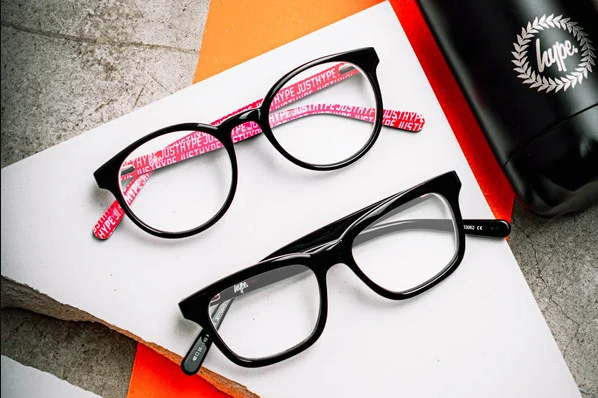They can reduce glare.
They can absorb blue atmospheric scattering and provides more contrast. When performance is your top priority, the right lens tone can give you the results you want. UV rays are blocked by a special coating on the lenses. And inferior sunglasses not only cannot hold back ultraviolet rays but let lens permeable luminosity drops seriously, making pupil greens. Ultraviolet rays can shoot in large quantities instead, your eye is damaged.
The Cons of Transition Lenses
However, besides the pros of transition lenses, there are also some negative voices of transition lenses.
The transition lenses are not effective in cars because the windshield blocks the UV rays so that transition lenses won’t darken very well in the car.
Different brands of photochromic glasses have different levels of darkness and different reaction times. So, you may need to ask the doctor to find the brand that works best for you. Transition glasses are affected by colder weather. So it means that it may take a bit longer to react to UV rays in winter. Most transition lenses are not polarized which may result in harsh glares.
So, if you need transition glasses, try Koalaeye Optical, which provides the Koalaeye photochromic glasses. Besides these, Koalaeye Optical also provides other kinds of glasses, such as blue light blocking glasses, polarized sunglasses, progressive sunglasses, and so on.
The frame of prescription glasses
At present, the more common materials for frames are non-metal and metal. Non-metals mainly include TR90, sheet material, etc., and metals include alloys, titanium, and so on. TR90 and sheet material are actually plastics, but they are firm and are not easy be deformed at room temperature. Also, they have good formability so that they can be made in many fashionable styles. The general alloy material has good firmness and flexibility, but the disadvantage is that it is easy to fade. The pure titanium frame is corrosion-resistant and very strong. It is about 40% lighter than the general alloy frame. It must be welded and electroplated in an oxygen-free state, which requires high equipment and technology. Relatively speaking, the price of TR90 and alloys will be lower, and pure titanium will be more expensive. You can choose according to your budget.
Evolution of hard coating technology
The first generation of the use of hard coating technology began in the early 1970s, the quartz material is deposited on the surface of a resin lens under vacuum conditions, form a very hard anti-wear film. However, due to the mismatch between the thermal expansion coefficient and the film base material, it is easy to delaminate and crack the film. Instead, it forms the mottle on the surface of the lens, and the effect is not optimal.
The second generation of hard coating technology is the use of the 1980s. The surface of the resin sheet is coated with a material with high hardness and not easy to be brittle and cracked by an immersion process. At this time, anti-reflection coating lenses had appeared and gained the recognition of consumers, but the mismatch between adding hard coating and anti-reflection coating still caused serious lens wear.
The third generation of hard coating technology was developed in the 1990s, mainly in order to solve the problem of wear resistance after coating resin lenses with an anti-reflection film. The hardened material evolved into a polymer organic matrix material.
Fourth-generation coating technology is dominated by silicon atoms, in which the hardened solution contains both organic substrates. It contains inorganic ultrafine particles, including silicon elements, which make the hard coating not only tough but also hard.
How do bifocal reading glasses work?
Bifocal reading glasses have two different lenses on the same lens. The top of the lens is your normal distance prescription, while the bottom is for close-up viewings, like reading. The two lenses allow you to alternate between them by moving your eyes up and down as needed. A bifocal lens is a type of lens that has two different areas of vision: one for close range and one for long-range. Typically, the upper section covers remote vision and the lower section covers reading. With a traditional bifocal lens, you can see the difference between the two lenses because the lower curve is a little different.
What is a progressive lens?
Progressive multifocal lenses are lenses with different upper and lower powers for seeing far above and below for seeing near. The distance from the fixed far power above the lens to the near power fixed below the lens does not change suddenly, but a gradual transition between the two through the gradual change in refractive power. Compared with ordinary lenses, there are many advantages. The appearance of the lens is like a single vision lens, and the dividing line of the power change is not visible. Not only is the appearance beautiful, but more importantly, it protects the age privacy of the wearer, and there is no need to worry about revealing the age secret due to wearing glasses.
Since the change of the lens power is gradual, there will be no image jump. It is comfortable to wear and easy to adapt. So it is easy to be accepted. Because the degree is gradual, the replacement of the adjustment effect is gradually increased according to the shortening of the short distance. There is no adjustment fluctuation, and it is not easy to cause visual fatigue. Clear vision can be obtained at all distances in the visual range.
Such a pair of glasses meets the use of long-distance, near-use and various distances in the middle at the same time. It is especially good news for teachers, doctors, music workers, and computer operators, because these people not only need to see far and near objects clearly, but most of the time they also need to be able to see middle distance objects such as blackboards, piano scores, and computer screens. . This is not possible with any lens other than progressive lenses.
Can you get your new eyeglasses in a day online?
Yes, it is possible to have an eye exam and prescription glasses on the same day. But unless it's an emergency, you'd better wait a few days and then buy the best glasses you need. Not all glasses are available within an hour or on the day of your eye exam.











































